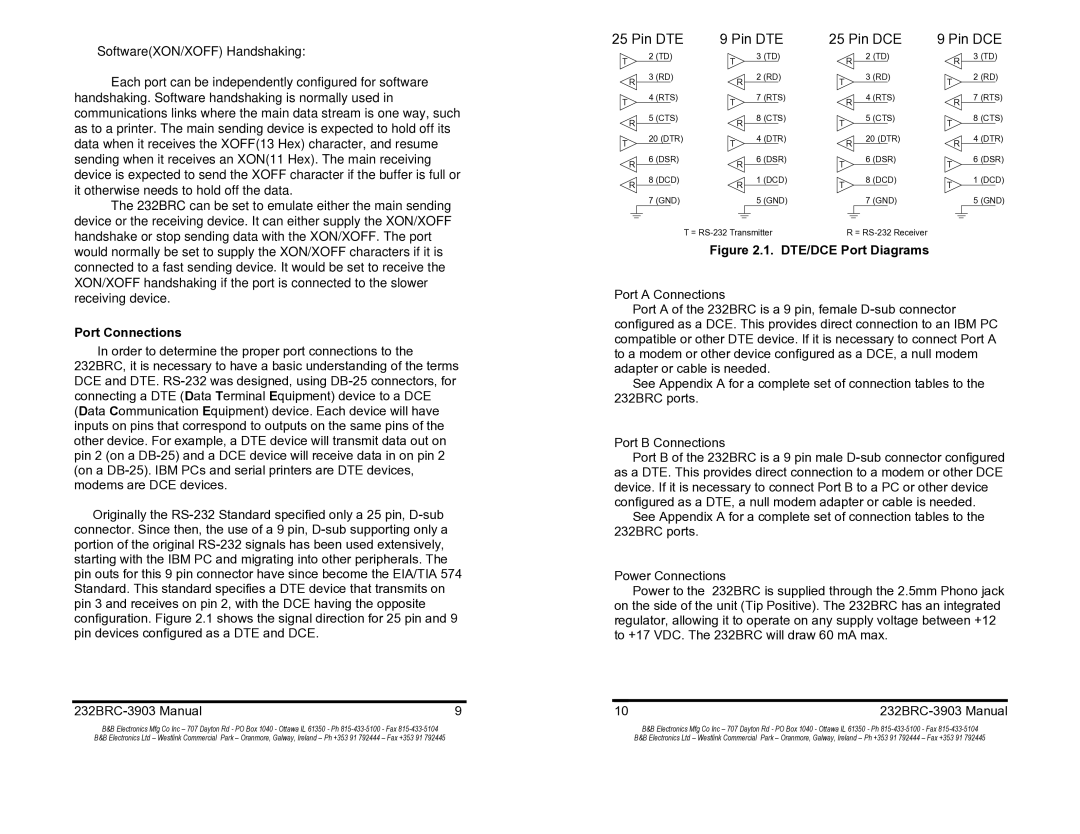232BRC specifications
B&B Electronics is renowned for its high-quality industrial communication solutions, and one of its standout products is the B&B Electronics 232BRC. This device plays a crucial role in serial data communication, especially in environments where robust and reliable connections are essential.The B&B Electronics 232BRC is a serial-to-serial converter that facilitates the connection and communication between devices that utilize different serial protocols. It serves as a bridge for devices that may not otherwise be compatible, enabling seamless data exchange in various applications, from industrial automation to telemetry systems.
One of the main features of the 232BRC is its ability to support both RS-232 and RS-422/485 protocols, making it versatile for use in multiple scenarios. The device is capable of automatic baud rate detection, which simplifies the setup process and ensures that users can quickly establish a connection without the need for extensive configuration. This feature is particularly beneficial in dynamic environments where devices may frequently be added or removed.
In addition to multi-protocol support, the 232BRC is engineered with built-in signal regeneration. This capability enhances data integrity by restoring signals that may have degraded during transmission, ensuring that the data received remains accurate and reliable. This feature makes it an ideal choice for long-distance communication, where signal attenuation can be a significant concern.
The device is also designed for ruggedness, featuring an industrial-grade housing that protects it from dust, moisture, and temperature variations that are common in factory settings. This durability ensures a long service life, reducing maintenance and replacement costs for organizations.
Moreover, the 232BRC offers extensive power options, including the ability to draw power directly from the data lines, which can simplify installation in environments where power sources are limited.
Advanced LED indicators provide users with real-time feedback on the status of the device, assisting in troubleshooting and ensuring smooth operations.
In summary, the B&B Electronics 232BRC is a highly efficient and reliable solution for serial communication challenges. Its support for multiple protocols, signal regeneration, rugged design, and user-friendly features make it an indispensable tool for industries that depend on consistent and accurate data transmission. Whether used in manufacturing, transportation, or remote monitoring, the 232BRC stands out as a preferred choice for professionals seeking dependable communications solutions.

